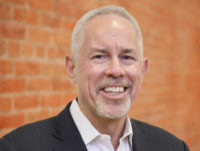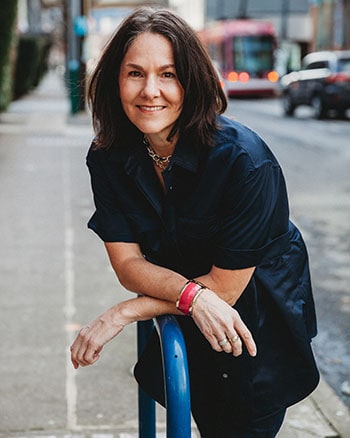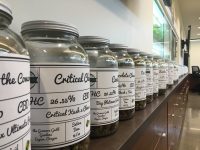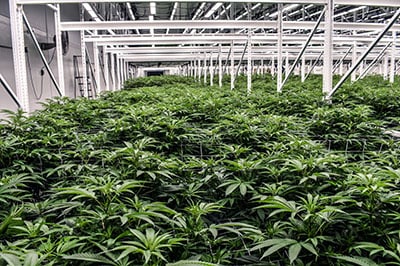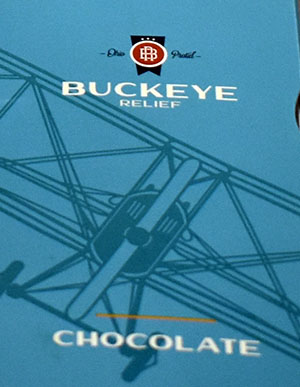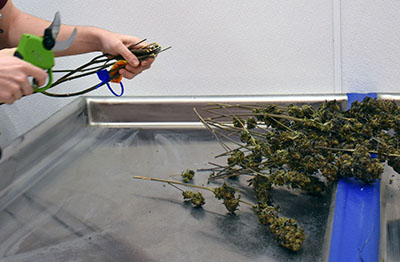When companies raise capital and grow, the No. 1 thing they do is hire.
Vangst, a Denver-based recruiting platform that connects cannabis job seekers with employers, is now better positioned to service that demand after launching its Executive Talent service March 29, with Jennifer Bedford as the vice president.
According to CEO Karson Humiston, who founded Vangst in 2015, more than 210,000 people are directly employed by the U.S. cannabis industry—a Leafly report estimated that number to be even higher, at 321,000—with a 75% growth in employment over the last two years. The new Executive Talent service will help companies secure administrative-level talent as they continue to build out and grow their leadership teams, she said.
“Before hiring [Bedford] at Vangst, we engaged her for our VP of revenue search. It was hands down the best experience I’ve ever had with an executive recruiter,” said Humiston, who turned around and reverse-recruited Bedford to join her team.
Before taking on the vice president of Executive Talent position at Vangst, Bedford was a veteran recruiter at Signal Partners, an executive search firm headquartered in Los Angeles, where she executed executive searches in the legal and compliant cannabis market. And before that, she serviced the consumer-facing tech sector. Overall, she is a 20-year veteran headhunter.
Vangst’s recruiting services include staffing cannabis companies with positions like marketing managers, budtenders and social media coordinators. But, until now, it did not have an executive talent offering—Bedford’s specialty.
“What CEO Karson Humiston has built is pretty much a top-tier staffing marketplace within cannabis, you know, a ZipRecruiter or an Indeed of the cannabis space,” Bedford said. “That’s exactly what we are building is a staffing recruiting talent marketplace within the most explosive growth consumer product sector in North America. It’s going to be super fun.
“We can elevate our game now for Vangst to be able to service the cannabis investors and to be able to service cannabis CEOs who want to build out their leadership teams that populate across the U.S.”
Here, Bedford shares more about how she became an executive recruiter in the cannabis space, tricks of the trade, how she connected with Humiston, where cannabis executives come from, how companies make their hires, how cannabis-sector recruitment stands out, what new states coming on board means for leadership teams and more.
Editor’s Note: This interview has been edited for style, length and clarity.
Tony Lange: How did you first get into your line of work?
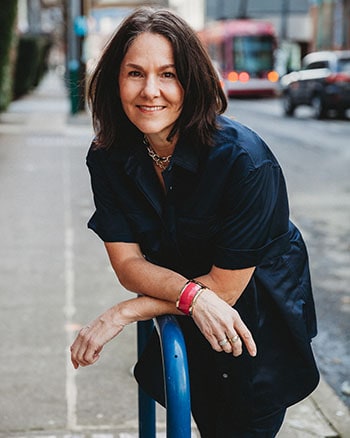
Photo by Sarah Waters
Jennifer Bedford: I cut my teeth at Korn/Ferry International—an executive search firm headquartered in Los Angeles—which is a really great place to learn the business. Executive search is not for the meek. There’s an art and a science to it. And I got to start with the best people in the business.
My Korn/Ferry days were all about technology. And what I learned the most from cutting my teeth was just knowing how to do this work. Getting top-level executives to get on the phone with you, there’s an art to that. So, I learned early on how to find whom I’m looking for and how to get them to talk to me.
TL: What are some of the tricks of the trade you learned early on in terms of executing leadership-level searches?
JB: The business that I’m in is a hybrid between sales and buying. I always say to people first I’m in sales because I’m trying to get “Tony” to talk to me. I like Tony’s background a lot. Tony looks like he’s a really good fit for that VP of marketing role that I have. I’m looking at Tony and I’m like, “Oh, I like him a lot.” So now I’ve got to get you to talk to me. I’m going to use my emails. If I can find any way to get you to talk to me, I’m going to do that. That’s what I learned at Korn/Ferry, is the relentlessness.
Then when I get to you, I’m going to give you the shortest amount of sell that I can so that you’ll talk to me. “My client is Apple.” Now Tony’s excited about listening to me because, boy, would he love to work for Apple. Once the sell part is accomplished, then I flip to being a buyer, which is now, “How good is Tony?” That is how executive search works. And what did I learn at Korn/Ferry? I learned how to do that.
TL: What else shaped your career path toward the cannabis sector?
JB: After Korn/Ferry, I pivoted into consumer technology, sort of grew up growing Silicon Valley technology companies, building out those leadership benches. And then I showed up at Signal Partners, my recent executive search firm that’s built to service investor-backed and owned operations here in Los Angeles—they’re a national leader as far as associating themselves with the investor side of the house. So, I was introduced to clients through the venture capital firm, or through the private equity firm, and that was Signal Partners’ sweet spot.
When cannabis clients started tapping on my shoulder and I started doing cannabis-related tech searches out of the gate, and started building cannabis technology companies and marketplaces, I went to my partners and said, “You guys, I should just call it our cannabis practice. Can I just put that stick in the sand and call it what it is?” And the answer was absolutely. We created a tech stack that was like a Porsche. To be really good in this business, you’ve got to have a killer tech stack, because if you hire me to do your chief marketing officer search, I want to know within 48 hours who are the best marketing leaders in that lane, and how can I go after them, and how can I find them. That’s what the back of the house looks like when I get an assignment like that.
TL: What year was that when you launched the cannabis practice at Signal Partners?
JB: I would say my phone started heating up with cannabis calls in late 2017, early 2018. And because my network is investors, I’ve spent years building my network of chief executives, executive-level operators, executives in supply chain and executives in technology. So, when those calls started, it was very easy for me to pivot. It was like just another consumer product lane. “Oh, I just did a kombucha search last year. Now I can do this hemp CBD beverage company, no problem.” [CBD is] the fastest growing consumer product category in the world. The same kind of executives want to get into it.
TL: Where are executives who want to join the cannabis space coming from?
JB: Well, the answers are pharma, supply chain, distribution—it’s consumer product boxed categories, technology, etc. So, my job is to sort through all of that talent and find the premier-level talent that is a trusted, vetted-out executive.
TL: Do leadership-level hires often have to relocate?
JB: That’s not a big thing right now with some states still shut down and a lot of people working remote. I don’t think you need to focus too much on that. Companies are making hires based on talent, which is, “Has she done this? Is she a rock star? How do we back-channel her?” I’ll use the edibles category, for example, “Oh, she took that jelly bean company from $650 million in revenue to $1.2 billion in revenue? Let’s talk to her.”
So, it’s much more than location. The concentration from our side of the desk is, what’s the talent? Then, as far as relocating, if you live in Brooklyn but I’m headquartered in Chicago, we don’t care right now. If it’s a job in which face-to-face is critical, then we’ll adapt.
TL: How did your previous experiences align you with your role as the vice president of the new Executive Talent service at Vangst?
JB: If I’ve spent the last 20 years building a prestigious network of killer executives, Vangst likewise has spent the last five years building the best staffing and recruiting brand name in the business. So, it was a really nice fit for me to go, “Oh, these are my people.” I can bring what I do to them.
TL: How did you connect with Vangst CEO Karson Humiston to conduct her vice president of revenue search (before she hired you as a full-time team member)?
JB: I had just finished LeafLink’s chief revenue officer search and recruited a guy out of a software-as-a-service marketplace company, and I had also found LeafLink’s head of insights, so I think LeafLink CEO Ryan Smith had suggested Humiston talk to me. That’s how the introduction was made.
TL: How does being a headhunter in the cannabis space differ from other arenas, and who are your competitors?
JB: Remember, I’m a talent scout at the executive level. Cannabis multistate operators right now want to grow and establish their executive teams. And that’s the sole focus right now is how do we have a big 2021? How do we do that? We do that by having killer executives—smart, social-equity focused, you know, cares about their organization, revenue-driven, all of that.
And so, my focus is on those multistate operators and on existing Vangst clients. We get to elevate Vangst’s clients’ game right now by giving them an executive search offering that they previously had to go out and use a search firm. You could say there’s competitors at the executive-search level with a few boutiques out there—like what I did at Signal Partners—that are doing our work. Those were my competitors then. And you’re starting to hear more search firms starting to put up their little cannabis flags and saying we can do that.
But I’m super proud to walk in the door at Vangst with a deep network of not only existing cannabis executives, but also a thousand executives with their hands in the air waiting to be called on. People want to get into this fast-growth sector.
TL: Companies are obviously counting on you to recommend the right person for the job so that they’re not coming back three months later starting from scratch—how do your executive talent searches ensure matches are a win-win for both employer and employee.
JB: You’re asking the age-old question about the part of the business that’s called human capital, and human capital is not for the meek. If you haven’t done your job right as a recruiter and you didn’t vet out what his or her weaknesses are, or vet out that his or her spouse didn’t want to be in that sector, or that his or her kid needed a special school and that relocating was a bad idea—in the human-capital space, you’ve got to know all that. You’ve got to do that homework and prepare as best as possible for this candidate to be successful at the company.
If somebody falls out at three months, what do we do? Well, there are different contractual promises that I say to a client. But my job is to give you a candidate who is so psyched to grow the business, and I’ve done all the homework to make sure that they’re not going to fall out.
TL: Virginia, New York and New Mexico are some of the recent states making moves to legalize adult-use cannabis. Do you feel more pressure to understand those additional state-legal markets, or are you more excited for additional opportunities?
JB: Great question; it’s both. The excitement level not only is elevating on a state-by-state basis, but also at the federal level. What cannabis has always been from the beginning has been a state-by-state chess game. And we’re all moving our chess pieces one piece at a time. And I think what we’re seeing in the state-by-state legalization conversation is that if you look at New York as an example, we’re getting better at this. As legalization efforts are hitting the East, the cannabis sector is so much more mature now. And if you fold the politics and the social equity components and the expungement components and all of that, really what I call good-news aspects of cannabis legalization, you’re going to see us getting better. You’re going to see this sector getting better. It really is analogous to other growth industries that we’ve seen over time.
And I pay attention to history. I pay attention to industries that have had their growing pains. And, boy, last year with the pandemic was certainly one of them for cannabis because cannabis, yes, we were deemed an essential medicine right at the beginning of COVID-19, but there was also a lot of recalibrating that went on last year. So, I think we’re hitting our stride. I think MSOs, Vangst clients, cannabis companies, cannabis ancillary companies, the technology companies associated with the sector, everybody is really flexing this year. It’s going to be a year in which you’re going to see a ton of growth. And, from my perspective, as somebody who cares about the sector, I want to see that growth from the executive level and from the C-suite. I want to see it done thoughtfully and carefully.

